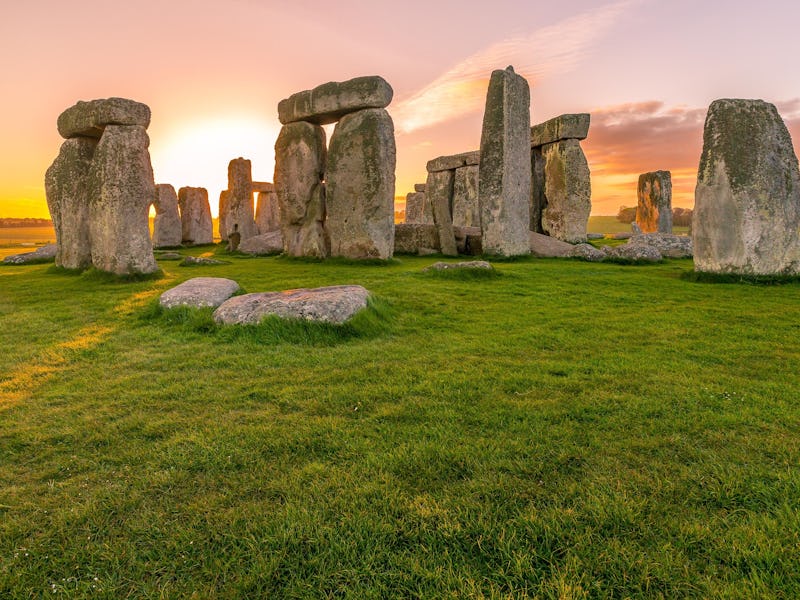Ancient Cremated Bodies Reveal Who Was Allowed to Be Buried at Stonehenge
It wasn't just the local elite.

The little we know today about Stonehenge is a mixture of heavily researched speculation and a few facts. We hypothesize that the ring of massive, dark grey dolerite stones was considered holy ground or a giant calendar; we know it was the site of intense, cosmopolitan partying and, later, a burial ground. But it’s only recently become clear who was considered worthy of a plot.
The Wiltshire monument was built in several stages, with the initial construction pegged to about 5,000 years ago. The stone circle was erected in about 2,500 BCE, and a banked, circular ditch was added about a thousand years later. In the 1920s, cremated remains of up to 58 individuals were found in a series of pits around the circumference of the ditch, revealing Stonehenge to be one of the largest Late Neolithic burial sites known in Britain. In a paper released Thursday in Scientific Reports, scientists finally reveal who those cremated remains belong to.
For obvious reasons, it’s very difficult to extract useful information from cremated human remains. To figure out where bodies come from, scientists typically perform a chemical analysis on teeth, but cremation rules that option out. Luckily, lead author and Université Libre de Bruxelles researcher Christophe Snoeck, Ph.D., developed a new method of cremation analysis, which sheds light on the mysterious owners of the buried ash.
“It was known from a pervious study that the bluestones used to build the earlier phases of Stonehenge came from Wales,” Snoeck explains to Inverse. “However, no information was available about the origin of those few selected individuals buried at Stonehenge. Our results show that 40 percent of the analyzed individuals did not live near Stonehenge in the last decade or so prior to their death.”
The scientists alongside Stonehenge.
Snoeck’s novel method uses the strontium isotope composition in bones to calculate an average of the foods a person ate over the last decade of their life. Applying this method to the Stonehenge remains revealed that at least 10 of the 25 cremated individuals examined did not spend their lives near Stonehenge. Instead, it appears that they came from west Wales — the same site where the monument’s massive bluestones were sourced. The strontium isotope ratios in the remains, the authors explain, were consistent to the ones associated with living in that area. Sometimes, you really are what you eat.
What this means, explains Snoeck, is that not all the people buried at Stonehenge were part of the local elite. The analysis of the cremated remains suggests that the bodies were taken to Stonehenge after death, a revelation that adds some clarity to the identity and origin of those chosen for a Stonehenge burial.
Cremated occipital human bone fragments from Stonehenge.
The west Wales bluestones at Stonehenge are believed to have been incorporated into the monument’s construction around 2,300 B.C. Archeologists believe they originated from a site 140 miles away from the monument, in Wales. The revelation that the people buried in Stonehenge were also from Wales is evidence that their connection to the site didn’t end after it was built.
“The results emphasize the importance of inter-regional connections involving both materials and people in the construction and use of Stonehenge,” explains Snoeck, “providing rare insight into the large scale of contacts and exchanges in the Neolithic, as early as 5,000 years ago.”